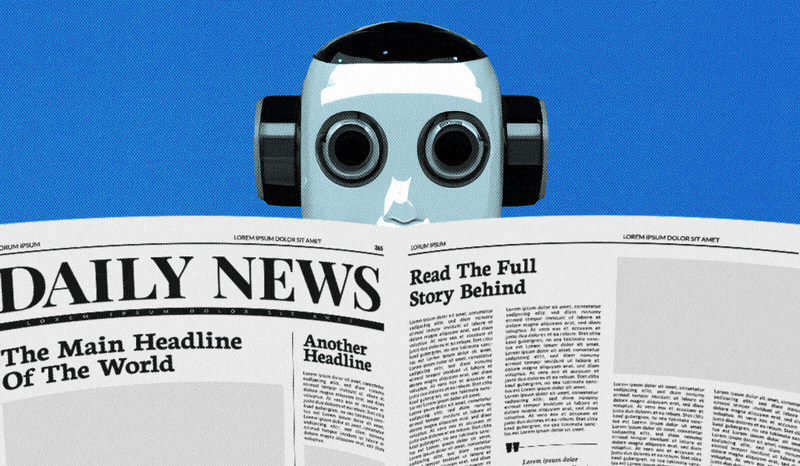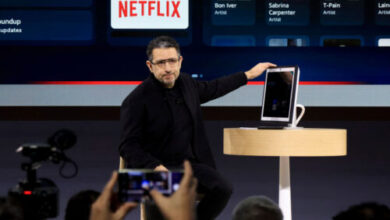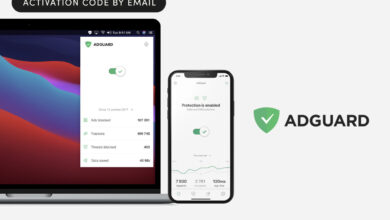Media Briefing: News publishers’ AI ad tools show positive lift, but still have to prove themselves

This Media Briefing covers the latest in media trends for Digiday+ members and is distributed over email every Thursday at 10 a.m. ET. More from the series →
News publishers have largely been reluctant to implement generative AI technology in the newsroom. But using generative AI to improve their advertising businesses is another story.
News UK, The New York Times and The Wall Street Journal all debuted proprietary AI-based advertising tools this year that aim to more effectively deliver advertisers’ campaigns to the publishers’ audiences, such as by having the AI tools determine which inventory is brand-safe or which audience segments are most suited to a campaign.
Over the past several months, beta tests of these tools revealed positive upticks in common KPIs that advertisers use to measure the success of their campaigns – like click-through rate and brand lift – but the publishers said they are still working to determine the revenue impact of these tools given they are only now hitting the market in earnest.
Betting on brand safety
Take News UK’s new contextual tagging AI tool called Nucleus Narr(ai)te, which was built with AI tech company Illuma and made its formal debut this week.
Nucleus Narr(ai)te works by assessing the context of the article and nuance of each publication’s style – it’s currently running across The Sun, The Times, The Sunday Times and talkSPORT – to determine whether or not the content is safe or suitable for advertisers (Cue calls of having one’s AI grade its own homework). It reviews content tags, sentence structure, categorical context (like sports, entertainment and personalities) to advance brand safety measurement beyond the blunt keyword blocking strategy commonly used by advertisers and agencies today.
“Ultimately, this is to increase ad revenue and also to ensure that our content is maximized [from a revenue generating perspective], so that we can continue to invest in journalism,” said Charlie Celino, head of strategic development at News UK.
Since beta launching in January, Celino said that the amount of brand safe inventory across News UK’s portfolio increased on average by 16% and a 10% increase in segment accuracy for categorization. And by adding more specificity to brand safety classifications, he said his team has been able to increase the number of brand safe categories it sells from eight to 11.
The tool itself is not being sold to advertisers and agencies as a product to directly buy, Celino said, but he’s hopeful it will lead to improved campaign performance for advertisers and incentivize them to become repeat clients. Then, hopefully, more clients will be attracted over time from its good reputation.
AI matchmaking
Other publishers are hoping their AI tools will be a more effective matchmaker between advertisers and audiences. And unlike News UK, The NYT and The WSJ are posing their AI ad tools as purchasable products for advertisers to incorporate in their ad buys.
The New York Times launched its BrandMatch tool in July. It uses generative AI to interpret an advertiser’s brief and place its display ads and video ads on content that will most likely attract its target audience – as well as new audiences that brands may not have previously considered but are just as likely to engage with their ads, said global chief advertising officer Joy Robins.
The beta test for BrandMatch ran earlier this year from April to June with six advertisers from various categories, including Ferragamo and Paramount+. Now formally launched, the tool will be open to more advertisers to test. The results of the beta test showed upticks in click-through rate, brand lift and attention firm Adelaide’s proprietary Attention Unit metric, Robins said.
In a press release announcing the tool, the company reported that the average click-through rate for campaigns testing BrandMatch was 0.4%, which is “meaningfully higher” than campaigns that didn’t use BrandMatch, though the company did not disclose the average click-through rate for the latter group. Average compounded brand lift for BrandMatch campaigns, on the other hand, was +8.4% in the tests, which the company reported is only “slightly above” its overall brand lift benchmark.
The Wall Street Journal’s AI tool, Thematic AI, matches clients’ in-house produced marketing campaigns or thought leadership content to specific readers in the Journal’s audience. The tool turns the marketing asset into a display ad and distributes it on WSJ content that is likely to attract relevant audiences, or finds audiences with specific job titles that the advertiser wants to reach.
Since launching in March, Thematic AI’s average click-through rates are, on average, 66% higher than ad units that were placed without using the tool, said a company spokesperson.
An ad buyer’s perspective
Those performance benefits will be crucial as advertisers aren’t exactly buying AI as a standalone selling point.
“A publisher having an AI tool is not alone going to attract new advertisers, because AI, in and of itself, isn’t a strategy. It’s really an enabler, and in many cases, an accelerator of a strategy,” said Liane Nadeau, head of investment at Digitas.
Nadeau added that the only way she would consider paying to use a publisher’s AI advertising tool is if it delivers much better campaign results or unlocks higher performing ad inventory that her client otherwise wouldn’t have been able to access without the tool. She declined to share specifics around performance results that would ultimately move that needle.
What we’ve heard
“[We’re seeing] earlier engagement, not necessarily earlier action, [from political advertisers in this election cycle] … Historically, those buys [on newspapers] have been local or late cycle.”
– Jason Taylor, chief sales officer at Gannett
Dotdash Meredith dissects its OpenAI deal
Dotdash Meredith’s content licensing deal with OpenAI helped to boost the publisher’s revenue in the second quarter of 2024, according to the earnings report released by its parent company IAC yesterday.
In addition to digital revenue being up – including digital ad revenue growth – DDM’s OpenAI deal contributed half the growth in its licensing revenue, which was up $4.9 million year over year compared to Q1 2024’s $2 million year-over-year bump, IAC evp, CFO and COO Christopher Halpin said during the company’s earnings call. And that’s despite, given that the deal closed roughly midway through the quarter in May, DDM only captured 60% of the quarterly revenue it will receive from OpenAI each quarter.
The key details:
- Total revenue in the second quarter was $425.2 million, up 2.7% year over year.
- Digital revenue increased 12% year over year to $238 million.
- Digital advertising revenue increased 16% year over year to $153.4 million.
- Licensing and other revenues increased 18.7% to $31.1 million.
During the earnings call, Youssef Squali, managing director at Truist Securities, asked if Dotdash Meredith is exploring additional content licensing deals with artificial intelligence companies and if DDM’s leadership was confident about being able to command multi-year, multi-$100 million deals like the one News Corp and OpenAI announced also in May.
IAC’s CEO Joey Levin said the company is actively talking to other AI tech companies about content licensing deals and that there is “no reason why we would not be in that position” to command multi-$100 million deals.
“If you multiply the OpenAI deal [with] every other LLM or similar concept, you can get to very large numbers, but we don’t know how the market plays out. I do say with high confidence that there will be more and I expect that there will be many more,” said Levin.
As for the types of future deals that DDM is entertaining with AI companies, Levin said that there will likely be a mix of cash deals as well as revenue share deals (similar to the model launched by Perplexity last month). But ultimately, the negotiations with AI companies are “tipping in aggregate in favor of everyone realizing that content is important,” he said.
Numbers to know
7.8%: The amount that The New York Times’ digital advertising revenue increased by during the second quarter of 2024, totaling $79.6 million.
20%: The amount of money the Tampa Bay Times is cutting its payroll by through employee buyouts.
20%: The amount that the Associated Press increased its ad revenue by after redesigning its website a little over a year ago to increase the number of ad units, multimedia and tools for recirculation.
$20-30: The new CPM price range that Netflix has set for ads on its platform, down from the initial $65 it charged when its ad business launched in 2022.
$40 million: The amount of money that Reddit paid to acquire Memorable AI, an AI tech company that the platform hopes will improve the performance of its ad business.
>$100 million: The amount of money Ziff Davis paid Recurrent Ventures to acquire CNET.
What we’ve covered
Publishers see short-term opportunity from Outbrain’s acquisition of Teads:
- Two of the most prominent vendors for incremental ad revenue — Outbrain and Teads — announced last week that the former was acquiring the latter in a $1 billion deal.
- Two publishers said in the days following the announcement that they will likely stand to benefit, at least in the short term, from two rather different businesses merging.
Learn more about the impact of Outbrain linking up with Teads on pubs’ businesses here.
What’s next for Google after federal judge’s monopolization ruling?
- A federal judge has ruled that Google monopolized search and the ad dollars it generates through illegal commercial deals.
- This lawsuit is a big deal because it targets the very heart of Google’s search empire, alleging that its dominance is built on monopolistic practices rather than fair play.
See what lies ahead for Google here.
X files federal antitrust suit against GARM, WFA, CVS Health, Mars, Orsted, Unilever:
- Elon Musk, the controversial owner of ad-funded platform X, has followed through on his threat to sue a global alliance of advertisers over alleged antitrust activity.
- Musk’s company filed the federal lawsuit today in the U.S. District Court for the Northern District of Texas against the Global Alliance for Responsible Media (GARM).
Read more about the latest lawsuit against GARM here.
Media and advertising dealmaking shows progress, but full recovery is still out of reach:
- Dealmaking in media and advertising is still moving, but calling it a full-blown resurgence is like calling a warm-up jog a marathon.
- Even the recent uptick in term sheets over the past two months feels more like a teaser than a true comeback for mergers and acquisitions in the space.
Learn more about the state of M&A in media and advertising here.
Here’s how AI is showing up during this earnings cycle:
- As the glimmer of the AI gold rush fades for some industries, ad-funded tech giants claim they’re already seeing signs that major investments are paying off for advertisers.
- Notable mentions of generative AI showed up in the quarterly results of Google, Meta, Amazon, Microsoft, Pinterest, Coursera, IBM, Coinbase, Udemy and Confluent.
See how prevalent generative AI was in recent earnings reports here.
What we’re reading
Layoffs hit Axios for the first time in the company’s history:
Axios, which was founded in 2017, will lay off 10% of its staff, or 50 employees, according to a report by The New York Times. The media company cited a challenging media environment and necessary changes to its central business as a reason for the layoffs, which will include cuts to the newsroom.
Bloomberg’s embargo debacle results in the dismissal of journalist:
Last week, Bloomberg News broke an embargo by publishing a story about the release of several American prisoners from Russia while they were still on a Russian plane. After an investigation, the publication’s editor-in-chief John Micklethwait announced that the journalist who wrote the article was dismissed and further disciplinary action was taken against other involved staffers, CNN reported.
The Atlantic’s journalists declare concerns over the publication’s OpenAI deal:
The union representing The Atlantic’s newsroom wants protections against AI included in its contract with the publisher, The Washington Post reported. Nearly 60 journalists sent a letter to their employer’s leadership demanding that The Atlantic ensure their jobs and work are protected, two months after the company penned a content licensing deal with OpenAI.
Elon Musk sued by Don Lemon after X deal falls through:
Former CNN host Don Lemon is suing X owner Elon Musk and the social platform for fraud, misrepresentation and a breach of contract after Lemon alleged that a planned partnership between the parties was abruptly terminated, Business Insider reported. The agreement was worth a guaranteed $1.5 million payment for one year with the option to renew the deal twice.
Pod Save America’s staff voices objections to the podcast’s democratic efforts:
According to a report by Bloombeg, Crooked Media’s mission has always been to support Democrat politicians – an ideal shared by the hosts of the company’s show Pod Save America. But now younger staffers of Crooked media say their progressive ideals aren’t shared by the company, creating an internal rift among staffers.



